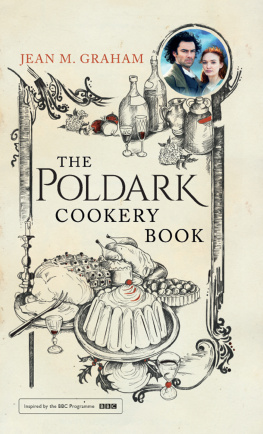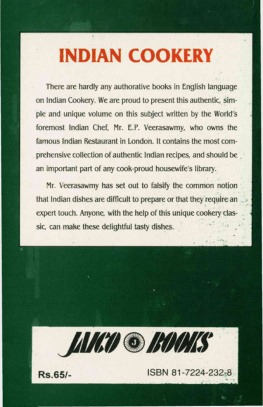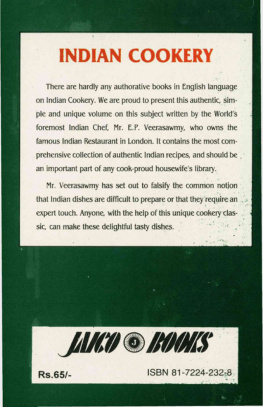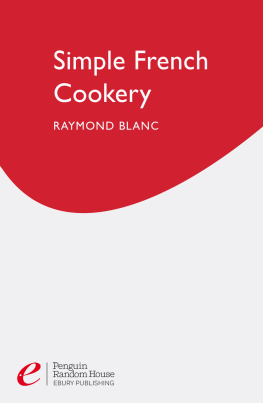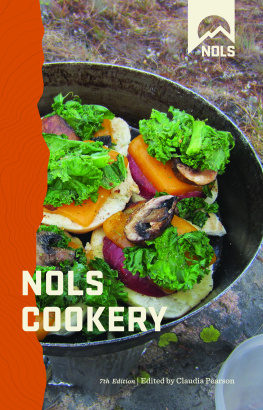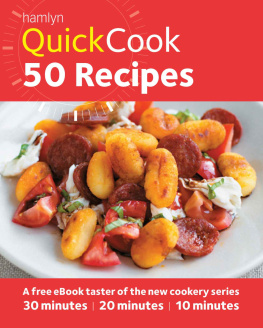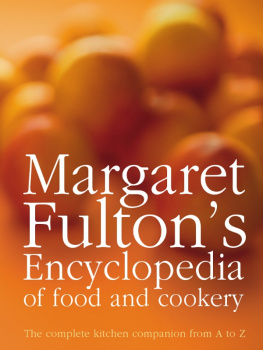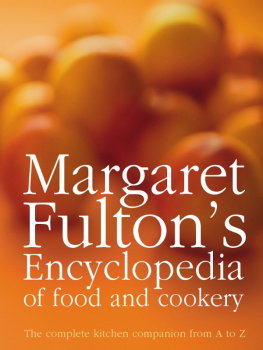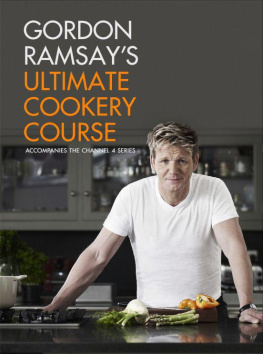THE GENTLE ART OF COOKERY
This compendium of cookery, though it concentrates on staple western food that is always available, contains a of wealth of recipes sure to pique the interest of cooks and connoisseurs of fine food. Unique chapters cover flower cookery, chinese scented teas, an Arabian Nights dinner and special children's cookery. It is the author's strong belief that good cooking is one of the attainable amenities of everyday life.
Hilda Leyel is the author of Elixirs of Life, also published by Kegan Paul.
THE GENTLE ART OF COOKERY
Hilda Leyel and Olga Hartley
First published in 2004 by
Kegan Paul International
This edition first published in 2010 by Routledge
2 Park Square, Milton Park, Abingdon, Oxon, OX14 4RN
Simultaneously published in the USA and Canada by Routledge
711 Third Avenue, New York, NY 10017
Routledge is an imprint of the Taylor & Francis Group, an informa business
Kegan Paul, 2004
All rights reserved. No part of this book may be reprinted or reproduced or utilised in any form or by any electronic, mechanical, or other means, now known or hereafter invented, including photocopying and recording, or in any information storage or retrieval system, without permission in writing from the publishers.
British Library Cataloguing in Publication Data
A catalogue record for this book is available from the British Library
ISBN 10: 0-7103-0915-5 (hbk)
ISBN 13: 978-0-7103-0915-0 (hbk)
Publishers Note
The publisher has gone to great lengths to ensure the quality of this reprint but points out that some imperfections in the original copies may be apparent. The publisher has made every effort to contact original copyright holders and would welcome correspondence from those they have been unable to trace.
INTRODUCTION
T HERE are seven ways in which this cookery book differs from all others:
(a) A great many more recipes than is usual are given for things that are obtainable all the year round, such as eggs, mushrooms, potatoes, apples, oranges, etc.
(b) The recipes are arranged in the only practical way, that is, under their principal ingredients, because it is more economical to do as the French do, shop first, and then arrange the dinner according to what is most plentiful in the market, than to go out and buy what is necessary for a pre-arranged menu.
(c) A whole chapter is given up to recipes for cold Sunday Supper Dishes.
(d) Another chapter contains a unique collection of flower recipes, all of them delicious and easy to make, bringing within everybodys reach things at present only obtainable at shops like Hediards in Paris. This chapter also contains the newest information about Chinese scented teas.
(e) In the Arabian Nights Chapter, a whole Arabian Nights Dinner is given, with the real recipes for actual dishes mentioned in the stories.
(f) A chapter is given to childrens cookery, giving recipes for things that will peculiarly appeal to children either to eat or to make for themselves.
(g) A list is given of the best materials to buy and also information as to where unusual ones may be bought.
The book has been made as modern as possible; there are a great many recipes for cooking vegetables and fruit, because the tendency of to-day is to eat less meat. Though all the good French recipes are included, the book is not exclusively French, but contains the best American and cosmopolitan dishes. The original names have been used as far as possible. Many of the most famous dishes are quite old, though variations of them appear in many modern books under fanciful names. In every case recipes have been carefully compared and the best chosen. Recipes have been taken from old family recipe books and from a unique library of the cookery books of every country. Recipes that are very extravagant or only interesting archaically have not been included, nor have recipes been given for any dish that cannot be made perfectly from written instructionsfor instance, omelettes and souffl potatoes can only really be learned by practical demonstration, and are therefore not included.
This is not intended to be an elementary nandbook on cookery, but has been written for those who appreciate the fact that good cooking is one of the attainable amenities of life if extravagance is eliminated.
CONTENTS
Cookery means the knowledge of Medea and of Circe and of Helen and of the Queen of Sheba.
It means the knowledge of all herbs and fruits and balms and spices, and all that is healing and sweet in the fields and groves, and savoury in meats.
It means carefulness and inventiveness, and willingness, and readiness of appliances.
It means the economy of your grandmothers and the science of the modern chemist; it means much tasting and no wasting; it means English thoroughness and French art and Arabian hospitality; and, in fine, it means that you are to be perfectly and always ladiesloaf givers.
RUSKIN
I
SAUCES
I detect the hand of an artist; the shredded lamb, the chick-peas, the pine-kernels; the cardamon seeds; the nutmeg; the cloves; the ginger; the pepper; and the various aromatic herbs. I taste them as a whole, and I taste them separately, so exquisite is the blending.
CHAPTER I
SAUCES
A FRENCHMAN once said: On devient cuisinier, on devient rotisseur, on est n saucier. The old definition of geniusan infinite capacity for taking pains, will make a Saucerer.
All sauces should be made in a double saucepan, the convenient equivalent of the bainmarie, which derives its name from a famous Jewish woman alchemist of the fourth century called Marie, who invented this method of boiling her concoctions.
Most of the famous sauces are many centuries old (the Sauce Robert probably dates back to the days of the Normans), and the compiler has chosen as far as possible the old recipes, which are better and simpler than the elaborate modern versions, spoilt by being drowned in vinegar and wine.
If the directions are carefully followed, all the following sauces can be made as well by an amateur as by a chef. A large number are given because it is in the sauce that one dish differs from another, and most made dishes take their name from their sauce.
It is not true that the English have only one sauce, but it is true that in England sauces are very often badly made, badly mixed, and not flavoured at all. The white sauce prepared in many kitchens would be useful for pasting scraps in albums on a wet day, but is not fit for eating. Yet it is perfectly easy to prepare a good sauce, and as the success of any made dish depends upon the sauce that gives it its name, it is important that the first principles to be observed in sauce-making should be understood.
Before a sauce is flavoured the foundation of the sauce must be of the right consistency and perfectly smooth, and neither too thick nor too thin. The general rules for ensuring the right consistency apply to all sauces.
The usual roux for thickening sauces is made of flour and butter; as the quality of butters and flours vary it is not possible to lay down the accurate proportions of each. Some butters will take less flour than others, but the flour must be added to the melted butter very gradually and worked into the liquid butter over the fire with a wooden spoon until the paste is absolutely smooth. For the white roux the mixture must be cooked just long enough to cook the flour; cooked slowly, not boiled. For a brown roux the roux must be cooked till it begins to turn brown. A sauce made with flour must simmer for ten or fifteen minutes after the flour is added to it or it will not be cooked. If milk forms part of a sauce it should be boiled first to avoid all risks of curdling, and strained into the sauce to keep out any skin that may form.


